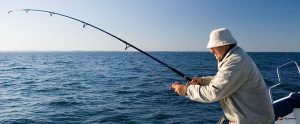If you love to go boating, it’s essential to know the most useful boating knots for securing your cargo to your deck and your boat to the dock. Whether you have a captain with you onboard or not, you will never know when an emergency will arise. For that reason, it’s important that you be prepared for anything.
With so many boating knots around, you might get confused about which ones to learn for your next boating excursion. Fret not because we’ve outlined the most useful knots every boater should know.
Essential Knots for Boating
Here are the most useful knots for boating that you need to know before you head out on your boat adventure:
1. Figure-eight Knot
The figure-eight knot, also called the Flemish bend, is a stopper knot used for rock climbing and sailing. It resembles the shape of the number eight, hence the name.
When boating, you can use it to secure your boat to the dock or other mooring locations. Here’s how to do it:
- Hold one end of the rope and cross it to the remaining length to form a Q-shaped loop.
- Pinch the top of the Q-shaped loop and twist it away from the loop’s tail once.
- Pull the loop’s tail to form two loops and insert it into the first loop from behind.
- Secure the knot by pulling both ends of the rope.
2. Reef Knot
The reef knot, also known as the square knot, is a binding knot. It secures the two ends of a rope together, which is why it’s a great knot for binding around objects or bundling cargoes.
Some people think that the reef knot is ideal for joining two ropes together, but it isn’t. It isn’t secure enough to provide a connection for two ropes, even with the same diameter.
As it is a light-duty knot, make sure that you watch video tutorials on how to do it to avoid mistakes.
3. Trucker’s Hitch or Wagoner’s Hitch
The trucker’s hitch is a compound knot used to secure cargo to the deck. As the name suggests, it’s also used to secure loads in trailers and trucks. Since it’s great at resisting tensile forces, it’s a useful boating knot to learn, especially with heavy cargoes.
There are many step-by-step guides that you can check out if you want to learn how to tie the trucker’s hitch.
4. Clove Hitch
The clove hitch is a type of boating knot used for securing boats to dock posts. It’s very easy to tie, release, and adjust. Follow these simple steps to learn how to tie it:
- Hold one end of the rope and wrap it around a dock post once to form a loop. Make sure that you have a decent amount of slack.
- Create another loop by wrapping the same end of the rope over the first loop.
- Feed the same end of the rope underneath and in between the two loops.
- Pull both ends of the rope to secure the knot.
5. Alternative Clove Hitch
The alternative clove hitch serves the same purpose as the clove hitch. The difference is that you need to form the loops first before wrapping the rope around the post when doing the former. Here are the steps you need to follow:
- Create a loop by crossing the rope over itself.
- Form a second loop in the same way. Make sure that the diameters of the loops are large enough since you will wrap them around a dock post or piling.
- Put the second loop behind the first loop.
- Slide the two loops over a dock post or piling.
- Pull both ends of the rope to secure the knot.
6. Cleat Hitch
The cleat hitch is one of the first knots for boating that every boater should learn. It is a strong boating knot used for long periods of mooring. As the name suggests, this type of knot is for securing ropes to dock cleats.
It’s a strong knot that’s easy to tie and untie. To learn how to do it, you can search the internet for tutorials made by experienced captains and sailors.
7. Double Half Hitch
The double half hitch — also called two half hitches — is a type of binding knot used for setting up boat slips. This knot for boating is used on deck posts or pilings. It’s hard to untie, but that’s a sign that it’s a strong boating knot.
Here are the steps to follow for tying double half hitches:
- Hold one end of the rope and wrap it around a dock post or piling. Make sure to have a decent amount of slack.
- Bring it underneath the other section of the rope, forming a loop.
- Insert it into the loop and pull both ends to secure the knot.
- Repeat the second and third steps. This time, you don’t need to wrap the rope around the dock post or piling.
- Pull both ends of the rope to secure the knot.
8. Anchor Bend
The anchor bend is a boating knot known for providing the most secure connections. It is ideal for tying ropes to an anchoring ring. This knot is so secure that it sometimes needs to be cut to release it. Follow step-by-step tutorials and guides from experts to learn how to do it.
9. Sheet Bend
The sheet bend is a knot for boating used for joining two ropes together, specifically those with different diameters. It’s useful but isn’t as secure as many people think it is; it’s only advisable for use on light cargoes and loads. To tie a sheet bend correctly, it helps to watch video tutorials.
10. Bowline
The bowline is a helpful knot that involves creating a loop at one end of the ropes. It’s easy to untie and doesn’t slip close with tension, which is why it’s an ideal knot for retrieving objects on the water.
Although it isn’t that strong, some people refer to the bowline as the most useful knot in the world due to its variety of applications. Watch step-by-step video tutorials to learn how to tie it properly.
Enjoy a Fun-filled Boat Adventure With Bay Excursions
Now that you know the boating knots you need to learn for your next boat adventure, the only thing left is to prepare for the thrill. If you want an exhilarating and safe boating experience, Bay Excursions has you covered! We provide the best private boat tours in John’s Pass, FL. Our experienced captains know how to tie knots for boating and are skilled in navigating the waters of Florida. Call us for inquiries and reservations!






